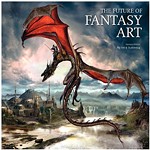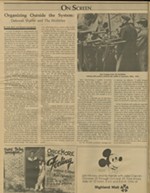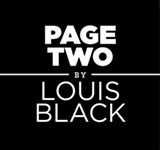Fantastic Worlds
A lifelong plunge into adventure with Edgar Rice Burroughs and Robert E. Howard is linked by Frank Frazetta
By Louis Black, Fri., March 13, 2015
In the all too classic way, when I was 10, my best friend and I stumbled across a box full of old books in his attic. Some of the titles were by Edgar Rice Burroughs, including a number of books about Tarzan, a character we were very familiar with because of the movies. The first one I read was Tarzan the Untamed, the seventh novel in the series. Once begun, there was no way to put it down. Burroughs is a master storyteller and a brilliant pulp artist. Since many of the stories were originally published episodically, he figured out how to hook you so you had to know what was coming next. Many an evening I hid under the covers reading, hiding from my mother. Always promising myself just one more chapter, but on finishing it I'd just have to plunge into the next.
To suggest that the Johnny Weissmuller MGM Tarzan films I knew were a pale imitation of the novels is to argue for a fullness they never even approached. The novels were so much richer and more imaginative (though they shared with the films the same simplistic racist, pro-imperialist worldview). After quickly reading through the Burroughs books we found, I was always on the lookout for new titles. Since they were all out of print, this meant further haunting the secondhand bookstores where I was already a regular.
One day when I was 12, I left an afternoon matinee at the Teaneck theatre and ducked into the nearby drugstore to call my mother for a ride home. Heading to the phone booth, I was literally stopped in my tracks. There in the paperback racks were a number of Burroughs novels published by Ace. I couldn't believe my luck. Buying two, I raced home to read them. Next, I turned to haunting any place that sold paperbacks, looking for the newest Burroughs titles.
The earliest ones I saw had covers by Roy Krenkel, which were fine – few fictional characters have been as well served by artists as Tarzan, beginning with J. Allen St. John, the earliest illustrator of his books. Still, as I saw more Burroughs paperbacks, the work of one artist stood out for me. It wasn't even that I was conscious of who Frank Frazetta was; something far more intuitive happened when I saw his work. If there were a number of new titles, the decision about which one to buy next would be driven by the cover art. And Frazetta's always won out.
What has always been striking about Frazetta is the amount of information he packs into a piece. Not only are his works loaded with mythic resonance, but they also almost always seem ripped from a greater narrative. You're never just witnessing an isolated painting, an aesthetically composed snapshot of a scene; you're invariably seeing a moment ripped from the life exploding all around. And a Frazetta work is never a still life. Whether depicting a fully populated action scene or a sole figure traveling through an exotic environment, it always bristles with a dynamic energy that's tangible. It is both astonishing and no surprise that full comic narratives have been developed from single paintings by him. Frazetta's comic narrative output – especially his work in Creepy, Eerie, and other Warren publications – is always rich, surprising, and evocative. But indicative of his skills, his most affecting works are the cover paintings.
Frazetta long claimed that he never read the books but just painted what he wanted. Regardless, few artists connected with Burroughs' vision the way he did. Frazetta's art has a jazz sensibility, expanding on themes while exploring counter-rhythms and undertones that provide a variety of ways for his work to make meaning. However, even this harmony with Burroughs didn't match the ideal wedding of image to content that occurred when Frazetta began illustrating the adventures of Robert E. Howard's Conan.
Reading Burroughs led me to Frazetta, but following Frazetta is what got me reading Conan. The MGM Tarzan movies played on TV a lot while I was growing up, but Howard and Conan were nowhere on my radar. In pursuit of Frazetta art to admire, I stumbled on Conan, and once I read a few, I wanted to read more. Expanding deeper into Howard territory eventually led me into a fascination with pulps in general (although I had encountered and read a lot of the SF ones early).
As a kind of bizarre literary thinker, it is Frazetta's art that connected first Burroughs and Howard in my head but then led me into a complex fantastic world more defined by Frazetta's visuals than anything else. This world is an ongoing plunge, an adventure in fantasy, as realized through an unrestricted imagination.
It seems almost unavoidable that a visual stylist like Rodriguez would collect a comrade in arms like Frazetta. Two visual masters addicted to the unexpected, happily pleasing their audiences by constantly surprising them. In both, the linear is implied while the deep moral constrictions of the world being depicted are undeniable.
Robert Rodriguez presents the Frank Frazetta Gallery, March 14-21, noon-8pm, 920 Congress. A $10 entrance fee will go toward the preservation of the art. Limited edition giclée prints of Fire and Ice, Chained, Moon Maid, and From Dusk Till Dawn will be available for purchase.









